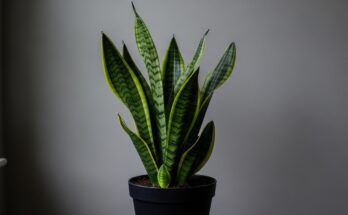desert rose pot at corner in Living room, Are you ready to unlock the secrets of the thriving desert rose? These stunning plants with their vibrant colors and unique appearance are a favorite among many plant enthusiasts. But like any prized possession, they require special care and attention to truly flourish. That’s why we’ve put together this ultimate guide to help you become a desert rose whisperer. Get ready to dive into the world of these beautiful plants and discover how to keep them happy and healthy. Whether you’re a seasoned gardener or a first-time plant parent, this guide has something for everyone. So let’s get started.
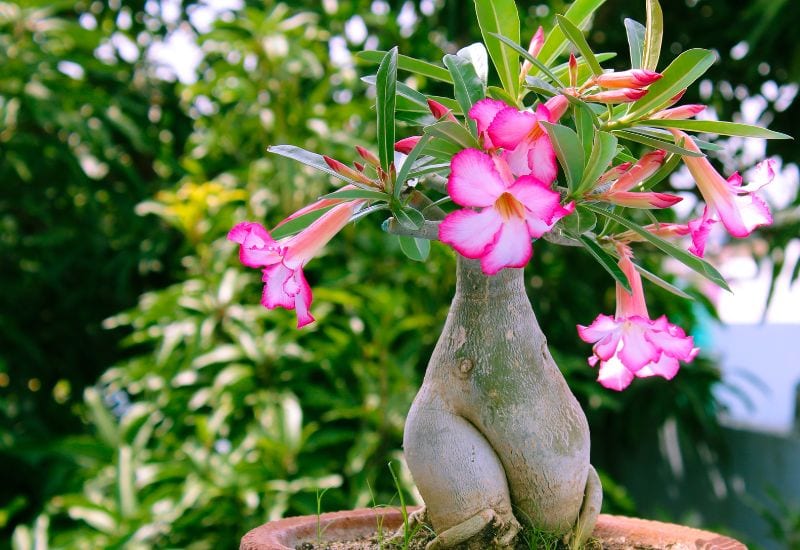
Light: Desert roses love bright indirect light. Place them near a window that filters the harsh midday sun to prevent scorching their delicate leaves. Just remember, too much or too little light can stress them out. So find the perfect balance for your plant’s needs.
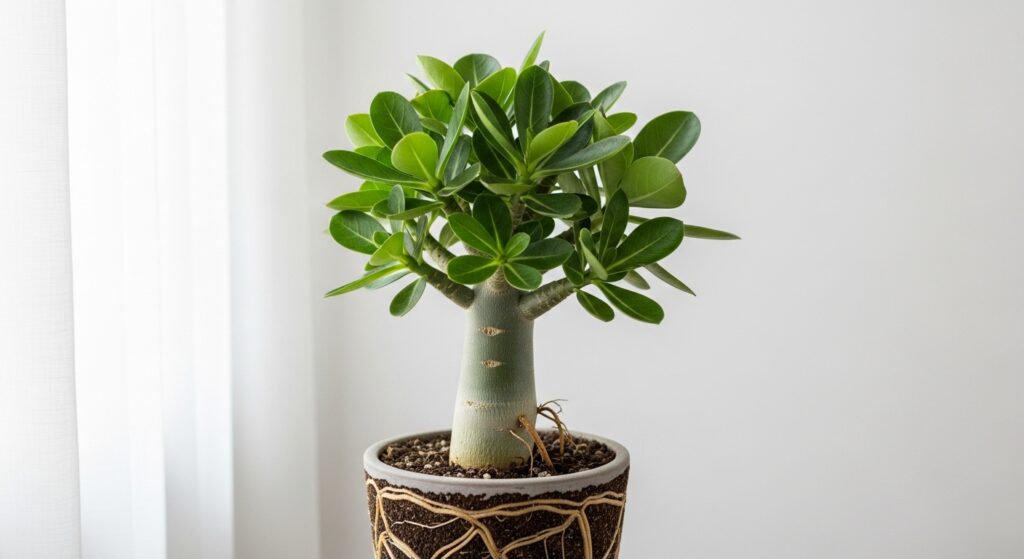
Water: While these resilient plants can handle dry spells, they also need consistent moisture to thrive. Stick your finger into the soil. If the top inch feels dry, it’s time to water. But be careful not to drown them. Allow the water to drain out of the bottom holes and only water again when the soil is completely dry. Overwatering can lead to root rot and kill your plant. Depending on factors such as temperature and humidity, watering your desert rose once a week or every two weeks should suffice. However, during periods of intense heat or if you notice wilting leaves, more frequent watering may be necessary. Always check the soil moisture before watering to avoid overwatering.
Soil: Desert roses prefer a well-draining soil mix that mimics their natural habitat. A mixture of peat and perlite or vermiculite with additional perlite for better drainage is ideal. You can also add some crushed oyster shells for extra calcium. Just make sure your pot has drainage holes to prevent water from pooling at the bottom.

Temperature: These warm-season succulents love heat and do best between 65 to 80 degrees Fahrenheit. They can tolerate some cold, but prolonged exposure to temperatures below 50 degrees Fahrenheit can damage them. So if you live in a colder climate, bring your desert rose indoors during the winter months.
Humidity: Unlike their tropical cousins, desert roses don’t mind dry air. In fact, they prefer it. So no need to mist them or worry about humidity levels.
Fertilizer: During their active growing season, which is typically spring and summer, desert roses benefit from regular fertilization. Use a balanced, diluted fertilizer, ideally one formulated for succulents or cacti. Feeding them once a month will give them the nutrients they need to grow and thrive.
Repotting: As your desert rose grows, it will eventually outgrow its pot and require repotting. When this happens, choose a container that’s only slightly larger than the current one. Use a well-draining soil mix and handle the roots gently to avoid breakage. After repotting, place it in an area that receives bright indirect light.
Propagation: There are two easy ways to propagate a desert rose. First, you can take a leaf cutting from a healthy plant and allow it to callus over for a couple of days. Then place the cutting in a well-draining soil mix and place it in an area that receives bright indirect light. The second method is to grow it from seed. Just sprinkle the seeds on the surface of a well-draining soil mix and place the container in an area that receives bright indirect light. Keep the soil moist, but not soggy, and the seeds should germinate in about 2 to 3 weeks.
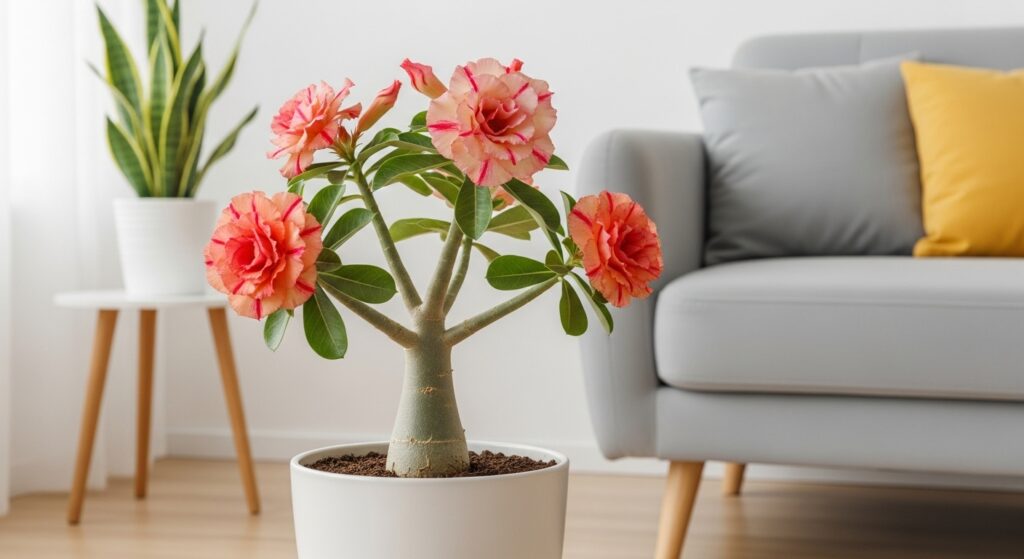
Common Pests and Diseases: Desert roses are generally pest and disease resistant, but they can sometimes be affected by mealybugs or fungal rot. To prevent these issues, ensure good air circulation and avoid overwatering. Treat any pests promptly and remove affected areas to prevent the spread of disease.
Now that you’ve got the basics down, it’s time to unleash your creativity. Experiment with different types of desert roses and create a stunning display in your garden or home. And don’t forget to share your success stories and tips with other plant lovers. Your experience could inspire someone else to become a desert rose whisperer.
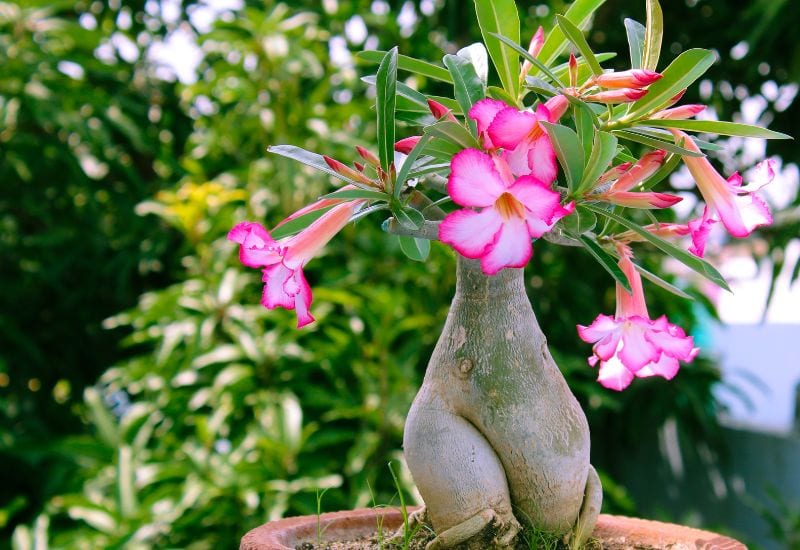
As you continue to nurture and care for your desert roses, you’ll develop a deeper connection with these beautiful plants. The joy of watching them thrive and flourish will be a reward in itself. So go forth, my fellow plant enthusiasts, and may your desert roses bloom with vibrant colors and endless beauty.


